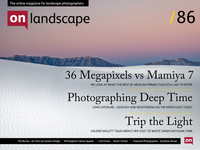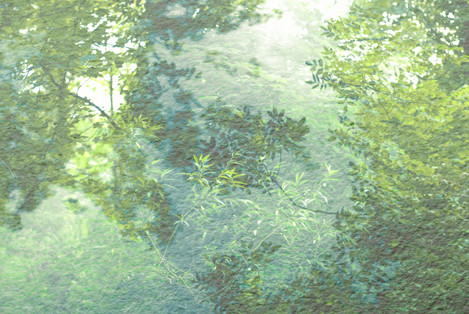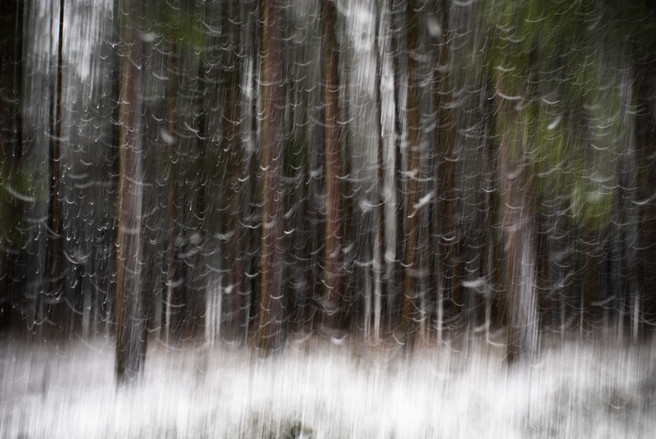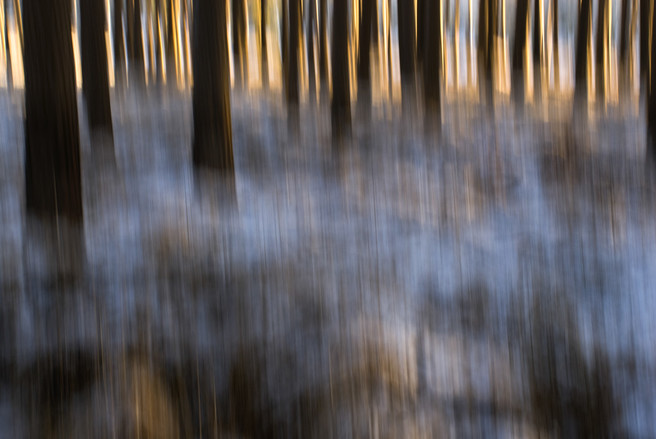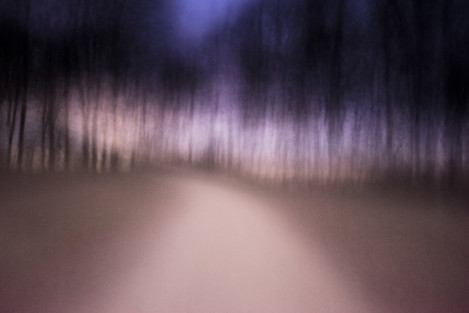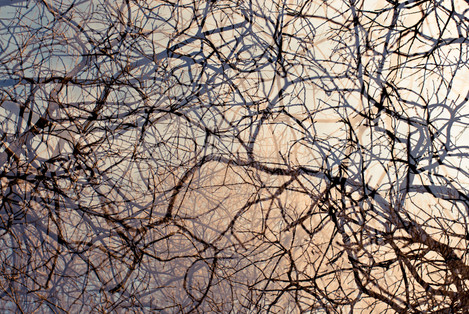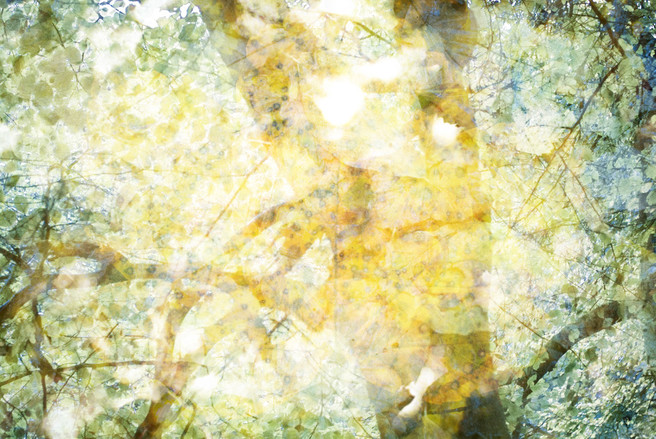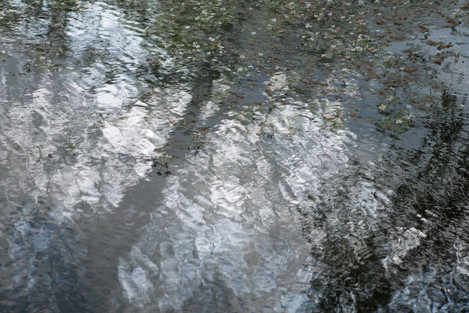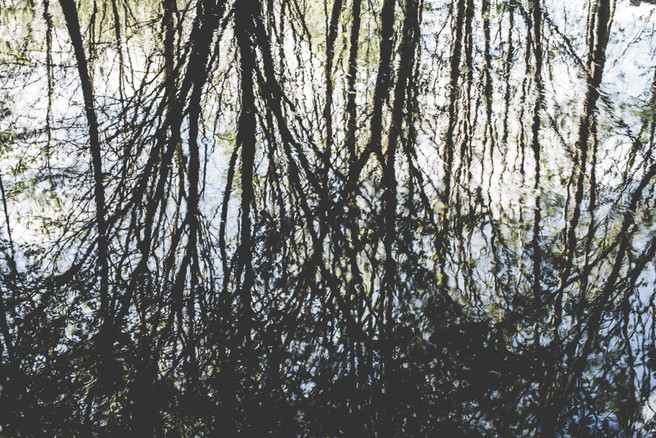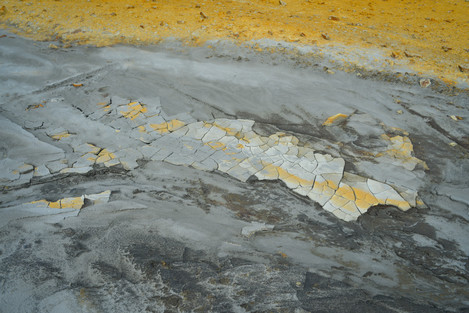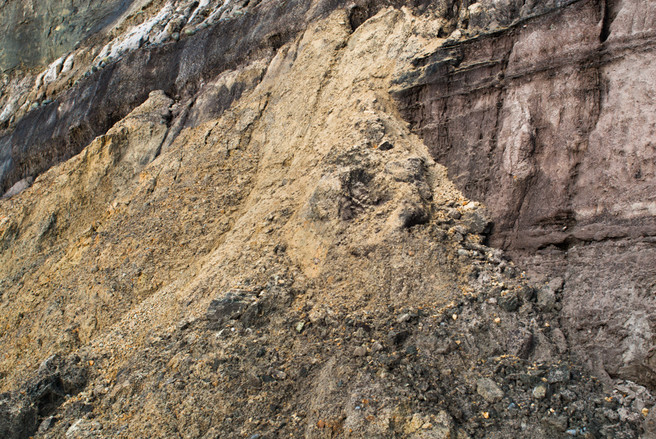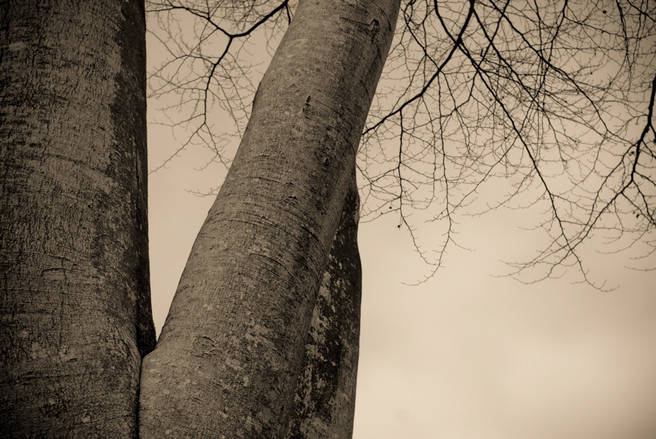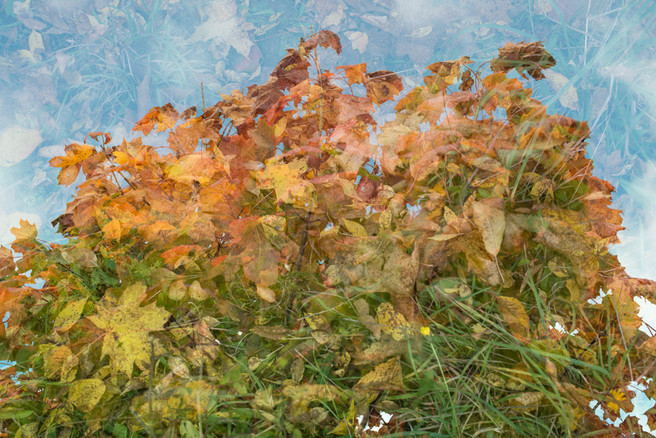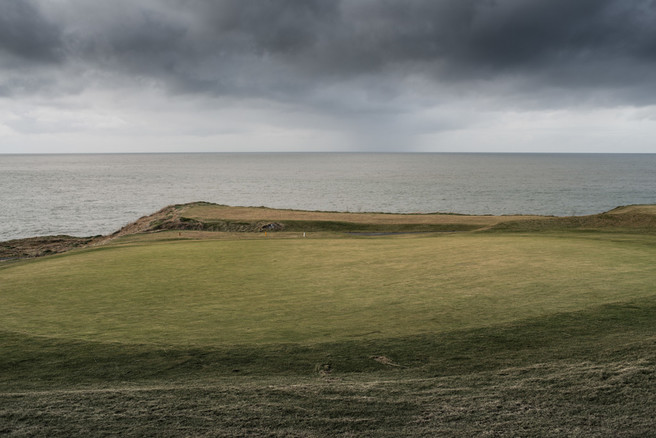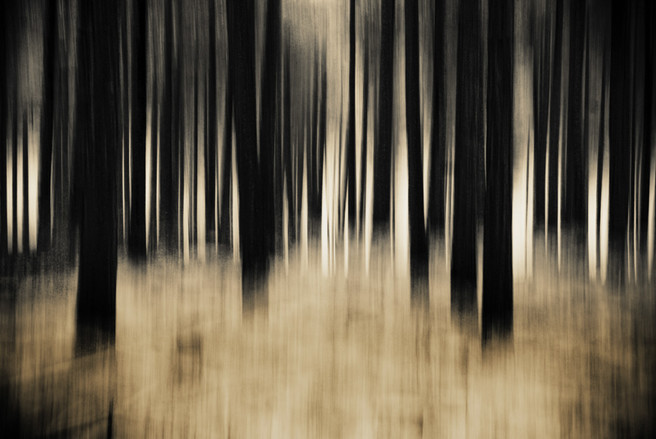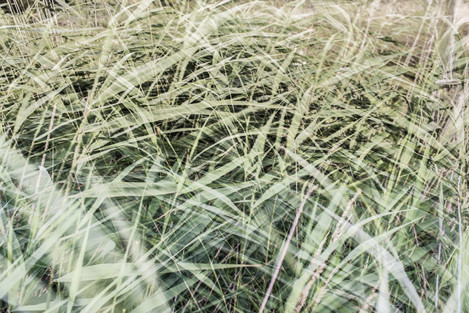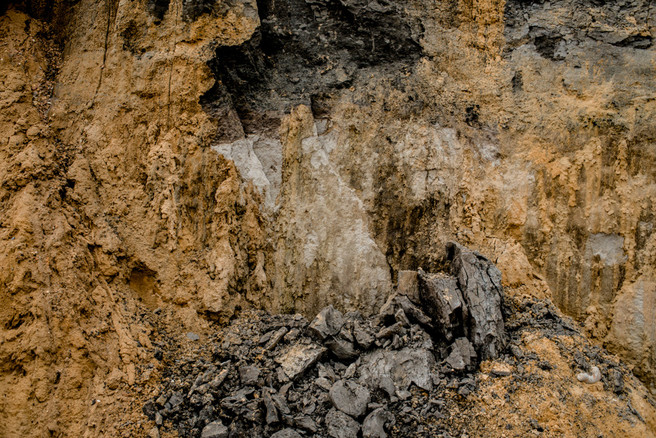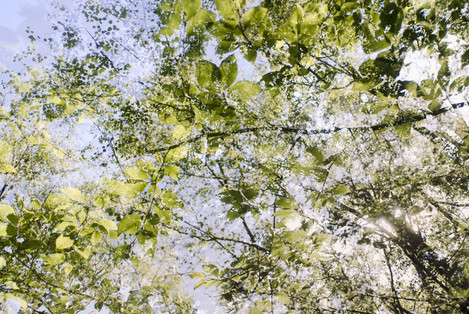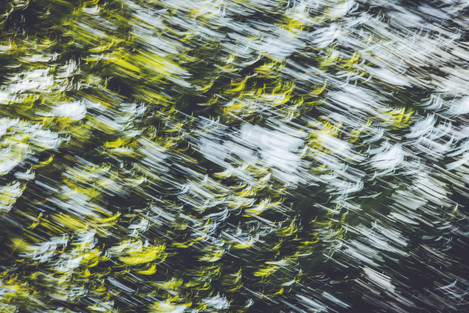Featured Photographer
Jonathan_Brown

Michéla Griffith
In 2012 I paused by my local river and everything changed. I’ve moved away from what many expect photographs to be: my images deconstruct the literal and reimagine the subjective, reflecting the curiosity that water has inspired in my practice. Water has been my conduit: it has sharpened my vision, given me permission to experiment and continues to introduce me to new ways of seeing.
We’re all judged on our images, often all too fleetingly, yet it is the connections that we make and the conversations that occur that can prove to be the most informative. A first telephone call to Jonathan Brown opened up the possibility of an extended conversation about individual photographic development. Jon has been using a camera for more years that he would probably like me to say. Photography has been part of his working life, as well as his hobby, for most of that time with the result that he has seen much come and go, and had plenty of time to interrogate and articulate his relationship with the camera.
You’re fortunate in having the New Forest as your playground but you largely eschew conventional landscape views?
It’s important to have your own voice; I have always preferred to try to find something personal, something that reflects my own journey. For me there’s an inherent logic in finding something to say that’s different or maybe not so obvious. Photography is a semi-automatic process, so there seems little point repeating what others have done. If I think back to my earliest recollections of taking landscape images, what I wanted to communicate was what I felt standing there on top of a mountain, buffeted by the wind, and this is perhaps what I am still fascinated by, although it’s the visual language that matters most.
When I started out I was hugely inspired by the work of John Davies whose unique voice defined British landscape back in the late seventies and early eighties – both natural landscape but also the urban landscape. There’s a photograph of his of Great Gable that became a benchmark for me of what landscape photography was capable of, I loved the way they were not stylised images – they were topographical and objective. I still love these images and try to produce photographs that contain the simplicity and honesty of these photographs. I’ve also been a big fan of people like Hamish Fulton who used photography as a way of recording experiences, so you’ll recognise that I’m attracted to different ways of taking photos, for me the camera is a tool for creative expression.
I’m perfectly happy in the New Forest, it’s close to the sea, and it’s close enough to the action but still very rural. I’ve travelled many roads since starting out with photography and landscape photography remains central to my life. Sometimes this is a solitary pleasure, but I love to share my experiences with other people through my photography; it’s fascinating exchanging ideas and thoughts that have become manifest in my photographs. And the photographs usually reflect my emotional reaction to what’s going on at the time.
I have lived in the New Forest for 15 years and what I photograph is just a reflection of what I absorb around me. I have never enjoyed taking conventional views, even when I worked for slide libraries, I have always preferred the back story to the punch line; the travelling to the act of arrival, so to speak.
The photographs in my “Rans Wood” series came about as a result of regular walks in a small section of woods very close to where I live near Beaulieu. I would take my three children and they would play cowboys and Indians, or climb trees whilst I would busy myself with my camera. I would always know where they were by the sounds they would make, or conversely I would call out to them so that we stayed in contact.
Although experimental in nature to begin with I soon found sequences of images worked better at describing my walks. The images are just an organic response to this process and the realisation that the landscape is the environment I live in, it’s what is all around me; it’s where I feel safe and happy.
When and where did your relationship with the camera start?
Growing up in rural West Wales, my father practised as a fine artist. He painted and taught at the local Art College, but also ran a graphic design and advertising business to generate income. I guess looking back this explains a lot about me; I always seemed to have a camera in my hands. We used to draw up advertising campaigns or identities for a client or product release over the kitchen table, and in our darkroom we produced a whole variety of graphic composites; occasionally our garage was converted into a studio or print factory! Whatever work opportunities arose - including some huge photo murals so large that we had to develop and fix them on the lawn with a mop; we worked out the solution and delivered the project!
My father owned monographs by photographers such as Ansel Adams and Cartier Bresson, and a substantial collection of art books covering every wall space in the house. We didn’t have a television, so from an early age we just did things like make pictures or read, and make a living I guess.
My first photographic books of my own were by Raymond Moore, Faye Godwin, and Bill Brandt. It’s fair to say that I still often see the sort of images that they brought to the genre, although I now have a much wider set of references to consider.
So I’ve been using a camera for 40 years or more by now, and photography has been a component of my working life, as well as my hobby for most of that time.
I started to make a living for myself whilst still at school by talking photos of motorsport and selling the prints. At the time it was quite difficult to capture the action of fast moving rally cars, but I developed a technique of shooting with flash and a wide angle lens and making very atmospheric shots with jaunty camera angles, and an income stream was born!
Looking back through my earliest negative files I can see though that I was always interested in landscape photography, and the most likely influence in this respect is my parents who were very much outdoor types. We used to go bird and animal watching, in fact my father started the first ever wildlife illustration course in the UK at Carmarthen Art School.
You studied photography at a time when there were few courses in it, and even fewer at degree level. When we spoke, you referred to the importance of education?
Photography was just starting to become popular, but it was still quite a technically challenging subject. Exposure, lighting and printmaking offering enough complexity to keep most at a safe distance, but the 80s saw a move towards a more academic approach to photographic communication. Up to this point photography was not taken that seriously as an art form in this country, and the few courses that existed were mainly in the technical colleges.
Farnham Art College, where I studied, had an impressive reputation for fine art and craft study and they developed a curriculum, that led a big change in photographic education, being one of only two or three that offered a degree level course in the plastic arts (as they were called then). So I consider myself lucky to have had three years there.
With the emphasis shifting towards semantics and visual theory at degree level, the academic considerations became as important as the visual or practical dimensions, and ‘what you were saying’ became fundamental to the image itself. And certainly for me the political landscape developed as subject matter alongside the formally interesting.
The most important aspect though of education is the development of a project based practice, working with and alongside other creative people, and the submission of your work to regular and thorough assessment by peers and tutor groups.
I believe that you have met a number of influential photographers on your journey. Who inspired you most?
I have indeed been lucky enough to have met and worked alongside some very talented and interesting people, and although I wouldn’t want to credit any one individual above others, I do believe that we are the sum total of the influences we gather along the way.
Someone who made a particular impression on me at an early stage was John Blakemore who ran a workshop with Paul Hill at The Photographers’ Place in Ashbourne. One of my earliest acquisitions was the 1975 Creative Camera Yearbook which contained a portfolio of his called Afon Cymru (Welsh Rivers). So when I had a chance to go and visit The Photographers’ Place in Ashbourne for a week, working in the field with him by day and developing film and discussing the fine art by night, it helped formulate a lot of ideas and working practices for me. It really changed the way I thought and saw things, and I guess that’s the point at which I stopped seeing landscape photography as pretty pictures. The idea of a philosophical debate conducted through the formal arrangements within the frame excited me enormously, and the intelligence that Paul and John brought to my understanding convinced me that it was worth further exploration.
Likewise I would credit Martin Parr and Paul Graham as very strong influences, not only because their work was hugely inspirational, but because they championed the work of other innovative photographers when they worked as tutors at Farnham Art College. Paul’s work especially was very ahead of the times, and his use of large format cameras and colour negative film, not to mention socially aware ideas, to create politically charged landscape images was ground breaking. Have a look at his A1 The Great North Road or Troubled Land sets which sits alongside John Davies’ work of the time as very different, and responsible for broadening my gaze slightly from people like Faye Godwin, Thomas Joshua Cooper, Edward Weston or Elliot Porter, whose work also inspired and informed me.
At Farnham we were very lucky to have a good programme of American visiting lecturers who brought the international dimension to our studies. People like Harry Callahan and Lewis Baltz both left a strong impression on me through the way they engaged with landscape photography, and I regularly go back to their work to make sense of where I am going. But in all sincerity, I have found inspiration and motivation through contact with many others who, like myself, just practice what they believe in.
Keeping an open mind, talking to a variety of people about your work, exploring the ideas and work of others are all essential dimensions of making personal progress.
We now live in the age of the internet of course, and in theory it’s much easier to connect with a whole host of different people regarding the subject of photography. There are rafts of publications, and places to show your work, and people who can offer counsel on your output – but it’s as hard as ever to get meaningful exchange.
But in truth most artists and creatives (and within this I mean musicians, fine artists, writers etc. as well as photographers) all enjoy dialogue or debate, and are happy to get into conversation in person, or even online. I would encourage people to be brave and open up to others they admire, take time to track them down and meet them at gallery openings or talks, because this is how you learn to broaden your mind. The more you give, the more you get back.
So many people now seem to aspire to turn their interest in photography into a career, but you have travelled in the opposite direction: from commercial and freelance photographer to a living that draws on your creativity but where you mostly photograph for personal satisfaction?
Well I have practiced in a commercial sense, doing mainly landscape, building and interiors photography. However relatively early on I changed the emphasis slightly so that I used my graphics and communications skills to lead marketing and PR projects which contained photography as a dimension rather than the main activity.
Broadly it was the arrival of the Apple Mac in about 1990 that facilitated the change, which took the pressure off me trying to make a commercial success out of the photography I didn’t particularly enjoy or wasn’t suited to. In reality it gave me a solid base to work from, and enabled me to keep my artistic endeavours as a serious pastime which I have found both rewarding and satisfactory. It’s just a matter of finding the right balance in work and life I think.
Do you think that freedom from commercial imperative helps with creative development?
Yes in my experience, but it’s more complex than that. Anyone who wishes to survive as an artist has to have a ruthless commercial instinct for survival. I personally migrated towards things that I found easier to manage or deliver, I don’t know that there was a lot of strategy involved – it’s what happened. But I certainly noticed that I enjoyed my private projects more when I didn’t have to rely on them paying the bills. I certainly can recall working for slide libraries and thinking that the images they wanted me to produce was not what I wanted to be doing. I was probably too naive to have done both together at the same time, but I also know now that it’s hard if not impossible to answer to two very different masters at once, and be good at both.
Over the years I have got to know many photographers, and I’d say most fit into one or the other category but some have demonstrably achieved both. Many clearly bring huge amounts of creativity to commercial work, someone like Nadav Kander springs to mind, who has the most incredible output of work, and has achieved huge commercial success too.
It’s also true that the more successful photographers now are ones that have a strong artistic dimension to their workflow, so with my marketing hat on, I’d recommend holding your line with regard to direction, but to have clear objective of commercial application.
What I think helps sustain creativity more than anything else is the ability to be enthusiastic about your own ideas, and to be able to communicate this widely. You need a huge amount of self-belief, but sadly that’s not something we are all born with, and hindsight is a wonderful thing!
It takes a degree of self-confidence to break away from the norm. How much is too much and do you think that self-doubt is important in driving us on to better things?
We are a curious mixture of opposites; in my case don’t confuse single mindedness and a determination to speak my mind with self-confidence! I can recall many instances of standing up for people or principles down the years, despite the fact I was quaking with fear inside. I was always encouraged to speak the truth by my parents and it’s fair to say that what many people say they like or value about me is my willingness to say what I think.
I have known several supremely talented creative people who possess on the surface an abundance of confidence, but are subject to terrific self-doubt and on occasion fragility. What you think you see may not be the whole truth…
Self-doubt is a normal component of an enquiring mind, which if used constructively will flesh out the weaker ideas so that the better work will stand more clearly. The ability to curate your own ideas, and reject the irrelevant is vital. Definitions of being successful depend on the level of expectation you choose to apply, but in my case I would sooner have a smaller number of followers who are interested in the real me, and engage with my artistic output, than to follow a strategy of developing the highest number of print sales.
Have you had any 'epiphanic’ moments as a photographer where things became clear, or new directions opened up? If so what were they and how did they change your photography?
I can recall one particularly dry period in the very early years when I couldn’t find direction in my work, and having been told by my tutor that I needed to use a tripod and slower film to improve the visual quality of my work chose defiance as my strategy. I wound the car window down and shot photos of the landscape from the passenger seat of the car, and surprisingly the images were rated very highly and gave me a new direction to follow.
I could also mention another example more recently which refers to one of the images of mine that you chose (Rochford, Exmoor), and tell you a story about how it happened. I was on Exmoor taking photos some years ago, and the weather was characteristically wet. My inclination was to give up, but I decided to just walk in the torrential rain instead, singing out loud as I went. This put me in a great mood, so I got my camera out and started firing random images through the trees in multiple exposure, some with flash, some upwards, some down, some with a wet lens, just anything that I could think of really, in various combinations. The image that remains, defines that extraordinary experience I had quite by chance, and that for me is the joy of being creative. Always be prepared to take chances.
We are sometimes guilty of having a relatively narrow definition of “landscape photography” in the UK. Rather than view landscape as a genre, you see it as part of a continuum, which can also embrace among other things environmental portraits, urban landscape and formal exploration?
The days of photographic subjects conforming to narrow genres are rather limited in my view; sure we understand what those genres are, but they are just a component of visual literacy. Good photographers are able to move between genres, and within the canvas of an image several elements may be at play. So portraiture is not just a head and shoulders, it’s a human within their domain. Landscape is the environment that contains us and many other things, it can be natural or man-made, or somewhere in between. The well-worn image of a melting ice sculpture on the beach in Iceland depends on the context (sequence of images) in which it is placed i.e. formally interesting arrangement or part of a broader statement about global warming for example.
I don’t really view photographers as landscape photographers as such, I tend to read their engagement with their subject through critical observation of some aspect of it. I think we are living in a golden age for photography. There’s a huge variety of images being produced and used, and it’s no longer the case that photography is the poor cousin of painting.
For example I am a big fan of Edward Burtynsky who has been successful in creating images of the land which reveal a deep understanding of much bigger issues affecting it. His series called Manufactured Landscapes explores the impact we have on the natural world through our appetite for energy, minerals, transportation and lifestyles in general.
Shooting on large format, and creating images that are viewed on an enormous scale he concentrates on simple messages using form and repetition to illustrate his message that we are all involved in sustaining this huge destruction of the landscape in the name of progress. Burtynsky’s work is at home within the pages of National Geographic or on the walls of a Museum – it doesn’t really matter whether we see it as reportage, or landscape or “Art”.
Originally I always preferred the look and feel of wilderness in my landscape images but now I see the impact of us humans on the landscape is just as worthy. We need to educate our peers to behave better, and this perspective has gathered much momentum, as the awareness of environmentalism has gathered pace. It’s interesting to observe Faye Godwin’s work at this point; she always was one of my favourite landscape photographers and was successful in bring her beautiful and symbolically rich images to the market through association with the work of poets and other artists. But it wasn’t until later in life that she was eventually able to find a market for her ‘political landscapes’, although I suspect that this would not have happened had she not broken through as a serious portrait and art photographer first.
If there’s a message that comes through from the absorption of photography into mainstream art, it’s that the images must carry a sense of communicating messages far beyond the simply visual. Some would argue that ‘pictorialism’ has maybe run its course, although I am still very fond of visual imagery that has the ability to communicate without words. The skill is in making images very simply that engage the brain.
But it’s certainly true that for that me, I have tried to pursue my own agenda with making images that make me happy, and not worry too much about whether people thought they were good landscape images.
I always feel a little dismayed when I read of photographers planning their excursions with the precision of a military campaign. I understand their desire to make the best use of the limited time available, but this overlooks the fact that a degree of spontaneity and freedom to experiment can be beneficial?
Yes, one of the problems of the age of digital, caused by the way people use the internet for research, is that it has facilitated an appetite for shortcuts to produce knockout images. Consequently locations are over used and people become fixated by achieving set piece examples as a badge of authentication.
I referred earlier to a workshop with Paul Hill and John Blakemore, which began with an exploration of the importance of getting to know the surroundings of a location, and to become fascinated with finding out what was really there. The plant life, the insect life, where the sun warms the ground, why lichen grows on a certain part of the tree, and so on. The smaller and less obvious the piece of ground, the more there is to learn there, and the greater the potential to make images of it. This approach takes time although the rigour of this approach will produce more deeply satisfying work.
Spontaneity is for me very important, and if I am boxed in by too restrictive a plan or timeframe I am less likely to respond to the challenge. Having said that I can think of occasions when a lack of time has caused me to work differently and again my creativity came through in unexpected ways.
Spontaneity, by contrast, is a rather different concept, and one that I think goes hand in hand with creativity. Using the resources you have at hand, and being confident that you can find something interesting to say is a challenge I particularly enjoy; although it’s not everyone’s formula for success! Organisation seems like the antithesis of spontaneity, although both have their place in the service of each other I think.
When I am at my freest, I am also at my most creative.
A while ago I came across a notice in a gallery that owning a camera no more makes you a photographer than a set of tools makes a carpenter. We touched on the importance, to both of us, of seeing the camera as a creative tool?
Again I am going to go back to education. All art education begins with a Foundation Course that teaches you to look, and see and think before you interpret. The key to developing personally is through learning to loosen up and get closer to your subject, not to copy what someone else is doing.
I’m not suggesting here that you don’t refer to other artworks, but that YOU make YOUR OWN marks on the canvas. As a photographer you need to develop visual literacy, in the same way a writer learns to tell a story and makes the story his. The narrative or narration, the perspective, the observations all coordinated in the service of your own personal hallmark.
When I started out it took three years to train how to use a camera, to be able to shoot and process film and prints. The need to choose film that was appropriate for the conditions, and influenced the appearance of the final image. The ability to select different lenses and compose images was part of a daily grind that took real time. Yet now it’s possible for a newbie to pick up a DSLR with zoom lens or an iPhone, grab a shot and with the aid of Instagram or some other photo app create an image that looks like it’s got style. But a camera for me and many others is tool that enables expression, forces you to refine your message until you have a series of workable options.
When we produced contact sheets back in the day, we rehearsed the flow of images that we had shot each time we looked through the sequence. I don’t think this happens any more. Digital workflows encourage you to identify the keepers and drop the rest into oblivion. Film costs real money, so we need to work each image as hard as we can, whereas digital gives us the means to shoot just one more for the road.
On the positive side, the ease of use of camera now frees the user of the need to be technically literate and use the tool for their own creative means, and lets face it the camera is an impressive tool; you can make a likeness, you can edit it and print the image, step and repeat. The only limitations now are creativity and the ability to craft the narrative.
Do you have favourite photographs? If so can you choose 2-3 and tell us a little about them?
I don’t think I have favourite images, any more than I have favourite pieces of music, food or artists. However naturally I find certain images more satisfying than others, better resolved and sustaining greater investigation.
Trees are a subject I have photographed for a long time; I’m attracted to the formal challenges and the juxtaposition of elements, along with the difficulties in resolving lighting created by the foliage during the life cycle.
Much like portraiture, capturing the individuality and experience of the tree is an interesting challenge. Traditionally landscape photographers have a tendency to choose pristine examples of a species when creating a composition, and this is compounded by foresters pruning trees to follow certain shapes for economic reasons. However I am often inspired as much by the idiosyncratic and random as the formally beautiful.
In this image of a Beech taken at Denny Wood in the New Forest I have rendered it in vivid monochromatic lith print style with very simple form. I like the juxtaposition of the strong trunk with the wispy outer branches. It’s not a conventional view, or one that describes the shape of this particular tree very well, but it looks like the tree and makes me smile when I see it.
One of the aspects of trees that fascinates me is the life of a tree, its history and the ecosystem that it supports. So I find myself contemplating this and (as my kids climb them) have spent lots of time thinking about how to photograph them. I am particularly pleased with a recent series of images of Maples that I took at Roche Court, near Salisbury.
The double exposures taken on dull day but using flash accent the colours, and the montage of an upward perspective of the tree with the fallen leaves on the floor makes for a dramatic and slightly surreal outline. There are leaves, where leaves should be, but they don’t quite fit one’s expectation of perspective, and the ambiguity of this causes me to question am I looking at a tree or am I immersed in a Kafkaesque dream?
The image of a golf green overlooking a downpour at sea over the Lleyn Peninsula of North Wales is a good example of what I try to achieve with images. A mundane or slightly washed out feel, with a sense of drama that is not too obvious. Clearly a landscape photograph in all senses of the description, but rhetorical rather than merely formal. Have the golfers been and gone, did the weather put them off, and so on.
Could you tell us a little about the cameras and lenses you typically use and whether they affect your photography?
Less is usually more for me, so I carry one body with 2 or maybe 3 lenses and these are always fixed focal length and manual focus. I probably could live with just a 35mm lens and get rid of the rest if I had to!
I prefer this approach for a number of reasons, although mainly it’s just down to simplicity. I don’t like too many choices and am instinctive about the images I see, and I find it easier to think like a telephoto or a wide angle if I have only a small range of options. It’s also that I like the look and feel of certain lenses, although this changes over time. For a long time I used a 24mm lens as a standard lens but now I have a handful that use more regularly than others (20mm, 35mm, 50mm, 105mm)
Shooting digitally I use a Nikon D800 which does everything I need it to. Quality is better than most other cameras I have ever owned, and the dynamic range makes files so rich that there really are few limitations on creativity. One of the aspects of digital that I like is that it allows me to experiment, it’s very responsive and being a full frame sensor means that all my old lenses are familiar territory to me again.
When I want to slow things down I use a Corfield WA67 which is a specialist 6x7 film camera with a shift lens and Prontor shutter and 47mm Super Angulon lens, and also a Ricoh GR1s notebook camera to satisfy the film urge, and I make my own prints using my Omega D-5XL Enlarger which is a beautiful piece of darkroom kit.
I like both analogue and digital as ways of producing images, although digital tends to be more popular with me because it suits my spontaneous approach to image making. Film requires time and commitment, and freedom to think at every stage in the process. My heart says film every time but my head takes digital!
Many of your images contain layers – either in their composition, or built up in camera or subsequently. What sort of post processing do you undertake?
Yes, layering is a device I use both literally and figuratively in my images, one of my current projects exploring the stratification of the landscape on the South Coast.
My interest in layering as a technique though, predates the arrival of Photoshop on the scene in the 80s, and I first started using it as a way of combining detail within the frame manually. Sometimes when photographing an interior it’s easier to work with a series of exposures and flash guns to illuminate separate parts of the picture. I also used the same technique to combine maybe a longer exposure to capture water moving with a faster shutter speed to capture accents of detail in the same water form. This is largely an invisible technique.
But multiple exposure, which I think you are referring to, has been practiced for a long time, and I think I first came across it as a way of expression after studying constructivists such as Alexander Rodchenko and El Lissitzsky who used photography in both montage and multiple exposure form to make polemic observations. I can certainly recall doing my own versions when I was on Foundation Year at Art College. Most of these images were done “in darkroom” rather than “in camera”, essentially a graphic design exercise. But I soon developed a passion for doing this in camera which required a different set of skills in mental juxtaposition, and when film was the only medium. In the days of film this means making one exposure on top of the previous, making an appropriate allowance for exposure.
What I like about the process is the sum of the parts can be very different that the individual elements, it’s particularly suited to impressionistic images. I prefer to construct mine in camera because this is a more permanent and final method – you can’t go back and change it afterwards, as is the case with doing this is Photoshop, or with an enlarger in the darkroom.
I also used this technique in my landscape photographs to blend fast and slow exposures of movement as I could see it gave a better rendering of detail in subjects like water of maybe the motion of trees in the wind. Both John Blakemore and Harry Callahan certainly used this technique, and I have no doubt that I borrowed it from them one way or another. Check out Callahan’s photos of Eleanor in Aix en Provence or Blakemore’s Thistles for more context.
I do occasionally run a series of images in Photoshop that are constructed from layers, as a way of experimenting with composition or juxtapositions, but my preference is always to shoot multiple exposures in camera because this certifies the work as complete and unchangeable.
Nowadays doing this within PS is seen as normal by many, although in my view sandwich technique is a better name because the images are assembled from ingredients, rather than prepared from fresh. Personally I prefer the natural look of the in camera montage, because the main creative activity is in field rather than via a computer. Multiple exposure gives me a way of working that helps create ambiguous or impressionistic images, and although a successful image is balanced and harmonious, it will nevertheless leave you wanting to know more than you can see directly.
As I mentioned above layering also features in the subject matter I am exploring through my project called Marginal. What began by trying to make sense of the sand, shale, mud and other fossilised remains being exposed and extruded along the coastline of the Isle of Wight and Dorset, developed into a way of trying to photograph the result of a hundred years or a thousand years of history unfolding.
With regards to post processing, I shoot everything on RAW and catalogue it with Lightroom. This enables me to manage what I am reviewing or working on, and to arrange images into groups or themes. I use a “Work in Progress” format to chew through images, working towards a file that I want to process further in Photoshop which I like to do as it arrests the image at a certain stage, stopping further tinkering. There is a danger in revisiting images too much and changing the look and feel of it. Lightroom possibly gives us too much control to bend files. I use colour coding to identify the various stages a file goes through, and a ‘blue’ file is one that has been edited and saved as a TIF. This is in effect a control file which I print from.
You still use traditional print-making processes alongside contemporary ones? I sense that print quality is very important to you?
We live in a time when prints can be made easily and to a reasonably high standard, but anyone who has ever held a silver gelatin print or maybe a cotton rag print in their bare hands will know they are holding something very special. The uniqueness and archival qualities of a handmade fine art print still commands respect.
With regards to print processes I continue to have a darkroom, but my main printer is an Epson 3800 and having produced a proof on Ilford paper I prefer to print onto satin Baryta paper which is closest to the traditional Agfa and Ilford photographic papers, or onto cotton rag paper which looks and feels more like an art substrate.
Printing has always been an important part of the process. It’s at the print stage that the image is really made, the way you select a treatment to enhance the tonality or a paper that reflects the tactile quality of the interface between you and the image.
As an artist print sales are key to developing a market for your output, and the way your images are framed, and the archival qualities are important elements to get right. Although I have to say that selling work is not my prime motivation these days. I did focus on this in my early freelance days and I found it difficult to sustain a meaningful existence, as it presents a damaging trade-off between doing things to sell and creating what interested me. Although as I get older I am leaning more in that direction again, as my financial needs ease.
It’s great to see that analogue photography is experiencing such a renaissance. I personally worked with traditional forms of printmaking like gum bichromate and cyanotype for many years, and barely met more than a few people who even understood what I was doing or why I was doing it. Now we have photographers shooting wet collodion and platinum prints used as common currency within the art market, which bodes well for making a career out of specialist printing. (John Brewer runs courses in the Manchester if you want to try this fascinating process, but check out Justin Borucki and Robb Kendricks’ photos for starters.)
I intend working with gum again on a project in the near future, which I am looking forward to!
Your inspiration comes from many sources: music, art, books, galleries and also outdoor pursuits, so I guess if you had to spend a week without a camera it could be easily filled? (I think you also mentioned criticism in the context of inspiration?)
If I didn’t have a camera I suspect I would make one, or else I’d make some lens-less images to pass the time! I personally find that my inspiration comes from a mixture of all the things you have mentioned, and I need them all.
Cycling for example is a vital activity for me, and a particularly enjoyable way of getting out and about and keeping fit; I ride my bike every day and going for a quick jaunt out into the Forest, is my metaphorical equivalent of walking the dog. My camera usually comes with me and I develop ideas or follow seasonal changes in the landscape of the area I live.
Something else that really inspires me is jazz music, I listen to music all day long, and would find it much harder to edit a pile of photographs in silence. For me there’s so much to learn about engagement through watching and listening to other people at work. I went to a concert by jazz pianist Randy Weston recently, one of the great twentieth century jazz musicians, and to hear him talk about Africa and his influences and how he turned this into music was very inspirational for me. Similarly if ever I have a dry patch for inspiration I listen to something like “You’ve got to have Freedom” by Ed Kelly and Pharoah Sanders and I cannot fail to find new direction.
Galleries certainly are important places and I visit regularly, since they often show stimulating work and give you sound benchmarks of the scope of work that is necessary to make a consistent body of work. They are also good ways of meeting people who share your own objectives, and spark ideas and point you towards others who have trodden similar paths. I like to visit a good range of both public and commercial spaces as you often meet interesting people who know more than you do, and are happy to share their knowledge.
They also often have good bookshops. Places like the Photographers Gallery or the Whitechapel Art Gallery have superb collections that you can view (without necessarily purchasing) and owning books is a very healthy distraction! Books, as distinct from the internet, provide an intimacy and engagement like no other, and my relationship with certain books lasts for many years.
The internet by contrast is a great source of information, but it’s very transitory, and references are easily lost. However I use online journals like Conscientious, American Photo, Mrs Deane or New Landscape Photography (other than OL!) as a way of keeping my sightlines open and my frame of reference contemporary and fresh.
So there’s definitely a relationship between inspiration and creativity, which is why I think that looking at what others are doing is healthy in developing your own ideas.
You’ve found a number of ways to progress your image making – from themes or projects, to PDFs and books? How do you see your photographic journey developing in the future?
Producing sets of prints, exhibiting work, creating books and displaying online are all good ways of drawing your work together and showing people what you are up to, and whether you do this to earn your living or just develop interest in sustaining your pastimes is very healthy for self-confidence.
I am usually more interested in what’s in progress, but I also periodically revisit things I have previously done. Amongst projects that I have in development, one project I have in mind is to revisit an urban landscape project that I did about 25 years ago just to see how much change there has been. When I originally photographed Lower Earley it was described as a new community, so I want to go back and compare the dream with what I find.
Another involves cyanotypes and gum prints on cotton rag paper, so I think I will have plenty to keep me busy in the year ahead.
Are there any fellow travellers that you think we should interview?
I would like to make the case for people working in slightly unusual areas of landscape, so my suggestions would be;
Steve Ellaway – I love his series of bus stops within the landscape.
Melaine LeRoy – He has great philosophical musings on melting icecaps and rock form
Bart van Damme – Urban Landscape photographer
Brad McMurray – Another great urban landscape observer
Austin Granger – Has a very agreeable mixture of natural and urban landscape
Bill Schwab – Excellent tintype landscape images, as well as other historical processes.
Abelardo Morrell – His pinhole and camera obscura works are absolutely fantastic
Dimitri Gronemberger – A Swiss photographer producing formally interesting landscape images.
Simon Norfolk – Has produced some great images documenting the war landscape
Jon Tonks – Similarly documenting the landscape of Empire, I’ve seen his book recently being republished.
I’m sure you’ll agree there is much in Jon’s answers to encourage further thought and discussion, and his suggestions for other photographers may also help broaden your horizons. Thank you, Jon.
To see more images visit Jon’s flickr stream or his website.

